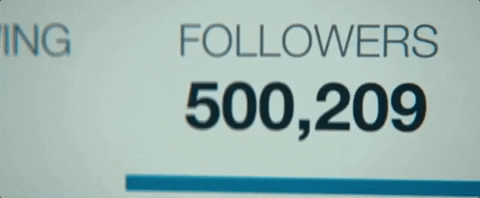In the old days, even before the radio waves were discovered, which are now like the dark ages for us millennial populace, the social media which we know today was just the word of mouth and paper parchments. People persuasion, which we now take up to our Twitter profiles, used to happen through people who were known as heralds – the people standing on the pedestal with the common event calendar and announcements from the crown. Businesses would pay them every time they brought in something new for the masses. The heralds or influencers would then reach the people for them. While some would flock to the store, others would turn a deaf ear. The only measurement of ROI on the herald was the amount earned on the day the herald spoke. Although there was no need for further details, measuring your influence would have been easier back then. Today, the influence has been loaded up on social media for business and your audience has a lot of ways in which they react to your message for them. So how do you know if you’re doing well when you’re the herald yourself?
Audit the Intensity of Follower Growth to Spot Deviations in Audience Actions
Following the favourite is the biggest thing on social media. Followers are what give you popularity and increase the amount of engagement and website traffic. The number of followers may keep growing, but sometimes, a bulk of them let your trail go. The consistent growth of followers means more business in the future. It is important to examine the growth and downfall of followers on your profile to root out the cause of disinterest among the audience. Take a fixed period of 48 hours, for example, while you see your followers count go down. Examine what posts you have uploaded in that time and check the data on your social media analytics tool for the time your followers went down or up. See what kind of posting spikes the graph or makes it fall.
Check the Impressions Metric to Point Out Anomalies in Reach
Impression metrics on social media platforms show the number of audiences that see your posts on their feed. Almost all social media platforms, that support business marketing, have built-in analysis calculators that provide you with the data of people being reached at a certain time. Facebook’s Reach section is the combined data of people who received your updates on their newsfeed. Impressions tend to spike up sometimes due to extra updates on your page. Keep tab on the number of posts in a week or month and check the reach of a fixed number of posts at a time. A jump in the number of expressions should be noted and the kind of updates responsible must be noted down for further growth referrals.

The follower count is always a great way to understand how well your posts are doing!
Source: https://giphy.com/gifs/orchfilms-people-you-may-know-xUPN3lFweTO9jnXgCk
Survey the Engagements on Your Updates to Find Differences in Interactions
If your posts are not engaging your target reach, all the followers that you have accumulated are of no good. Post engagement is the main output you can receive by using social media for business. Engagements are the various options through which the audience react to your posts. Retweets, Likes, page shares and comments are some of the common ways people engage with your posts, and it affects the marketing goals that you have setup. Narrow down the amount of data you must analyse by separating those posts for which got you significant engagement. Then you can reapply the ideas of similar posts to create more engagement. Platforms that support various content categories must be assessed for the amount of engagement on different kinds of posts like pictures, videos, links, etc.
Review the Clickthrough Rates of Your Social Media Updates
While using the influence of social media for business, the concern is generally to be able to bring the audience to your official website. Clicks are a form of engagement, but since they diverge traffic, it’s more of a call-to-action. It isn’t necessary that every click gets converted or at least gets to your website. So check your social media analytics for the number of clicks on the links to your landing page. Then go on your website analytics and compare the latter with the number of visitors. If you notice the visitors were fewer than the number of clicks on your social media page, it simply means that a majority of them either couldn’t reach the page or were stuck on the loading page and left. Check for problems on your website, solve them and then start posting with updated links.
While using social media for business promotions and marketing, not just the reach or engagement but also the actions of the audience can bring back results for your firm. Tags from pages and mentions of your brand over different platforms also add up to the results. You can hire social media marketers who create the content and take care of its influence around social media platforms.

